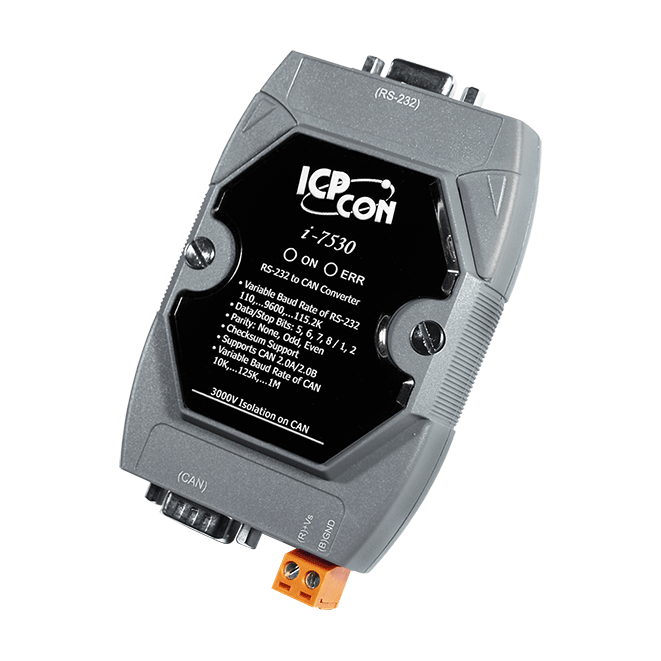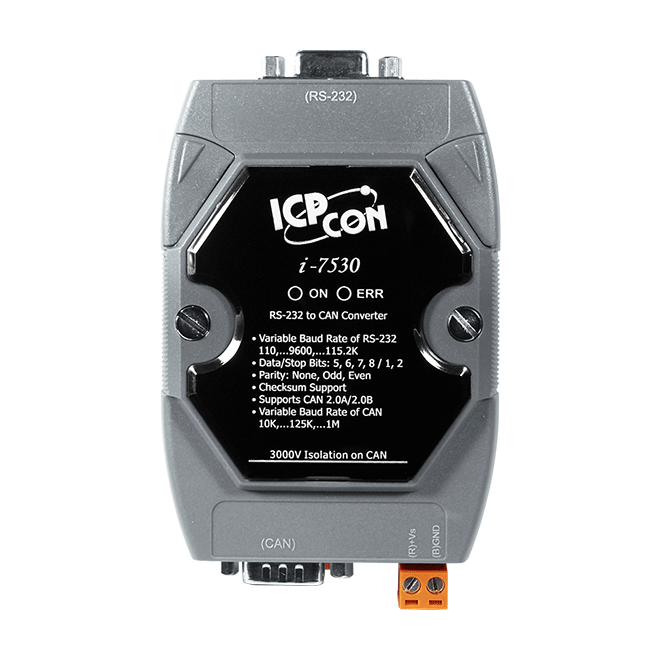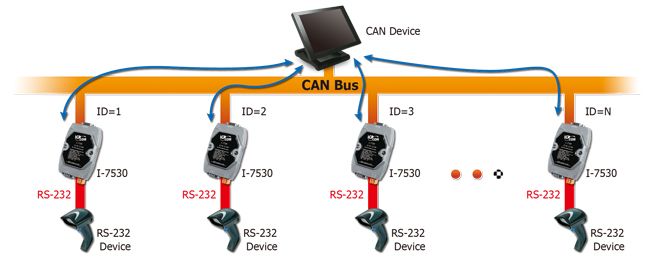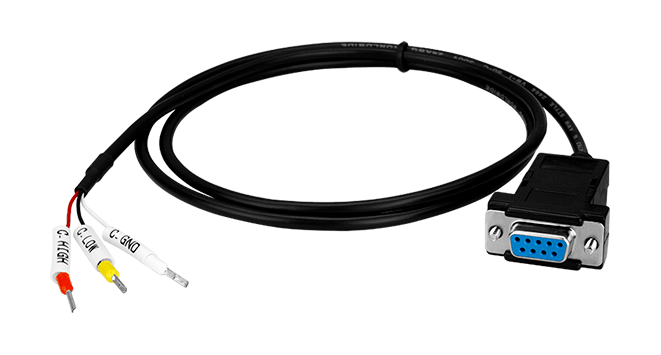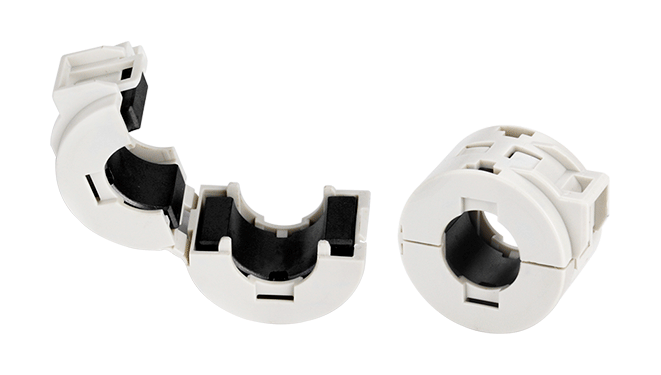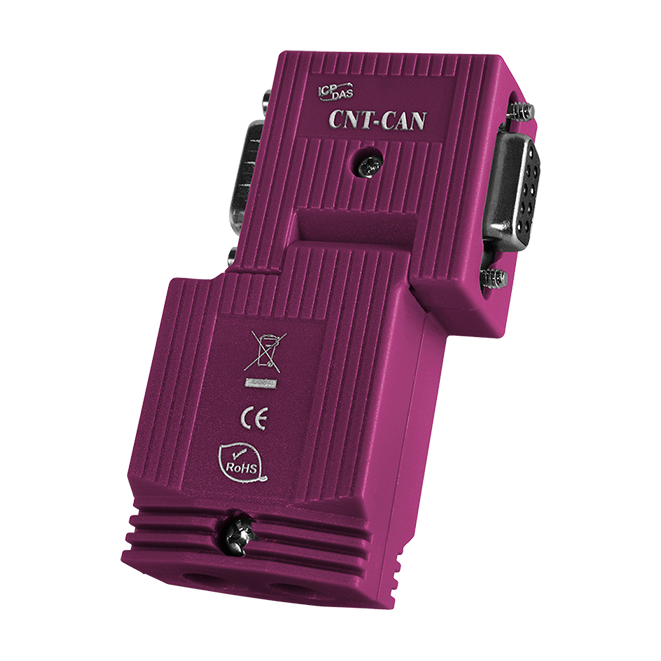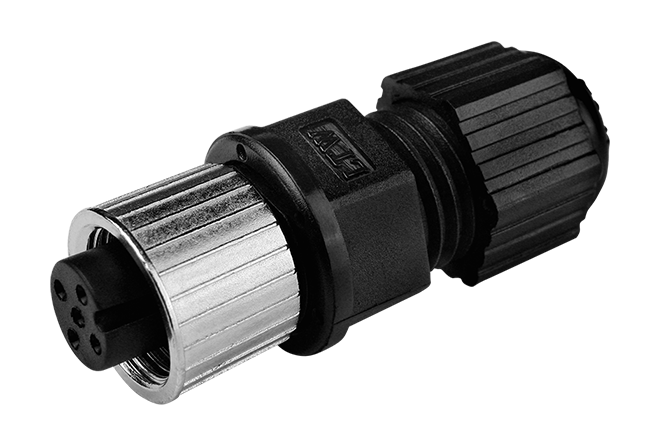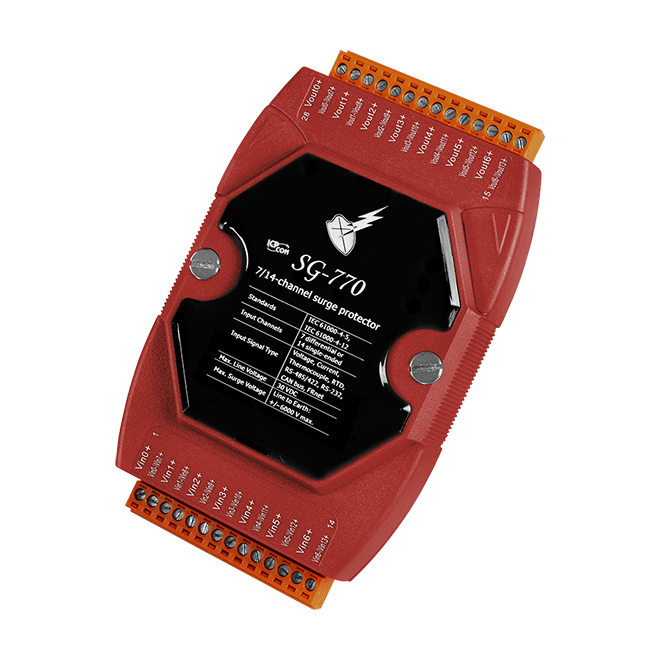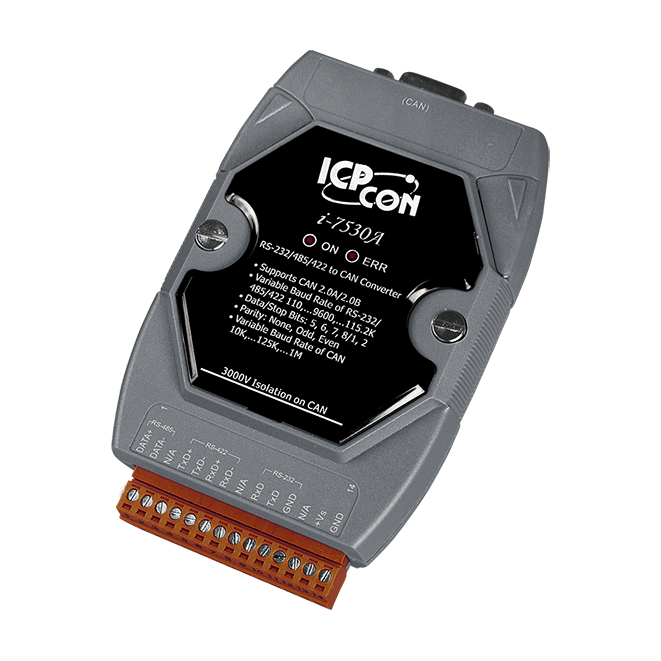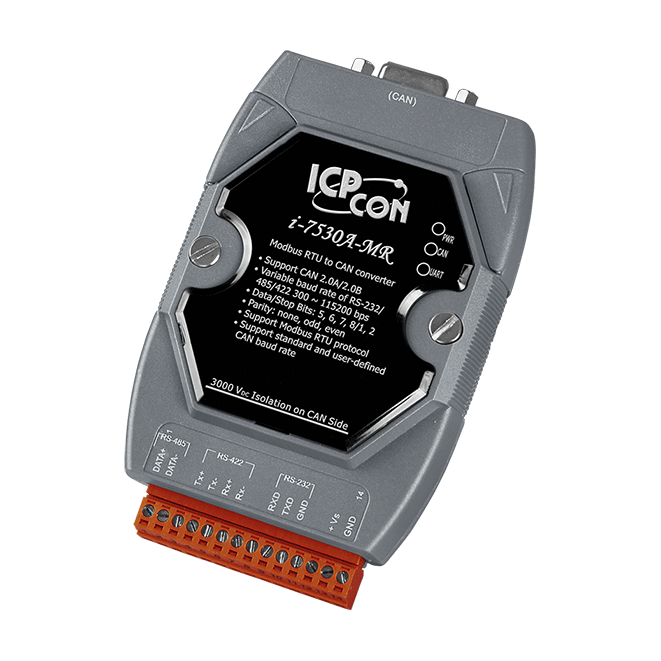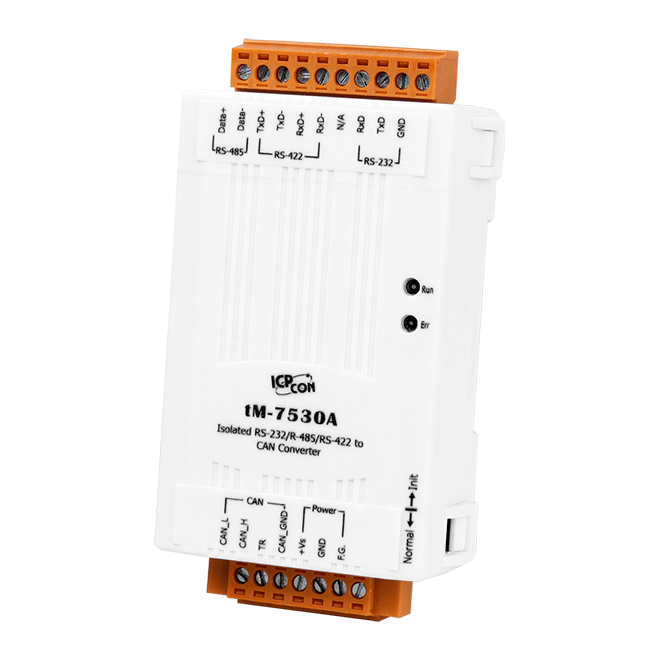I-7530-G
Introduction
CAN (Controller Area Network) is a serial bus system especially suited to structure intelligent industry devices networks and build smart automatic control systems. The following figure shows the application architecture for I-7530 modules. The PC can be the CAN host, monitor or HMI to access/control the CAN device through the CAN network by the I-7530 Converters. The programmable RS-232 device (For example: I-8411/I-8431/I-8811/I-8831/W-8031/W-8331/W-8731 embedded controller) can use the serial port to connect to the CAN network via the I-7530 modules. In order to use the CAN network with traditional RS-232 devices, we provide a way to achieve this purpose. The I-7530 are designed to unleash the power of CAN bus via RS-232 communication method. It accurately converts messages between CAN and RS-232 networks. This module let you to communicate with CAN devices easily from any PC or devices with RS-232 interface.
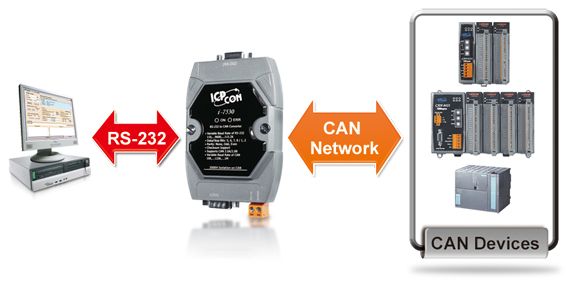
Moreover, we expand the functionalities of I-7530 for some special application. In pair connection mode, I-7530 can be used to connect PC with other RS-232 devices at the same time. The application architecture may be as follows.
3000V isolation on CAN side
The CAN port of I-7530 is an isolated with 3000V isolation. This isolation can protect the local RS-232 devices from the damage signal coming from CAN network.
Watchdog inside
The watchdog is a hardware reset circuit to monitor the operation status. When working in harsh or noisy environment, the I-7530 may shut down by the external signal. The circuit may let the I-7530 to work continuously and never halt.
Power and Error indicator display
There are two indicators on the I-7530. The power indicator can help user to check whether the I-7530 is standby or transmitting/receiving messages. The Error indicator will be turned on when some errors occur on the I-7530.
Applications

- Control System
- Building Automation
- Factory Automation
- Distributed data acquisition
Ordering Information
| PRODUCT SERIES | DESCRIPTION | QNT. | INQUIRY |
|---|---|---|---|
Similar Products
| LED Indicators | |
|---|---|
| Status | 1 x Power 1 x CAN status |
| COM Ports | |
|---|---|
| Ports | 1 x RS-232 (9-pin female D-Sub (TxD, RxD, GND)) |
| Baud Rate | 110, 150, 300, 600, 1200, 2400, 4800, 9600, 19200, 38400, 57600, 115200 bps |
| Parity | None, Even, Odd |
| Data Bit | 5, 6, 7, 8 |
| Stop Bit | 1, 2 |
| Receive Buffer | 900 data frames |
| CAN | |
|---|---|
| Ports | 1 |
| Baud Rate | 10 k ~ 1 M bps |
| Isolation | 3000 VDC for DC-to-DC, 2500 Vrms for photo-couple |
| Terminal Resistor | Selectable 120Ω terminal resistor by jumper |
| Specification | ISO-11898-2, CAN 2.0A and CAN 2.0B |
| Filter | Yes |
| Receive Buffer | 1000 data frames |
| Power | |
|---|---|
| Input Range | +10 VDC ~ +30 VDC |
| Consumption | 1 W |
| Mechanical | |
|---|---|
| Casing | Plastic |
| Dimensions (mm) | 72 x 118 x 33 (W x L x H) |
| Installation | DIN-Rail |
| Environment | |
|---|---|
| Operating Temperature | -25 ~ +75 °C |
| Storage Temperature | -30 ~ +80 °C |
| Humidity | 10 ~ 90% RH, Non-condensing |
- It has a CAN message field which can display the receiving CAN messages in Decimal or HEX mode
- Can display the timestamp of each received CAN message
- Users can change the display mode, up-down, down-up or stop
- It can count the number of received CAN messages
- Data Log : It can save the CAN message as “ txt ” file
- Has CAN ID filter function
- Can send CAN message to CAN BUS according the defined interval time
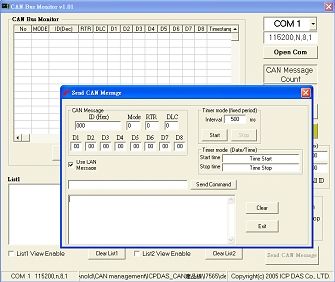
Software Utility Features
- CAN bus Baud rate configuration
- CAN acceptance filter configuration
- CAN 2.0A or 2.0B specific selection
- RS-232 Baud rate and data bit setting
- RS-232 responded selection
- Easy test to transmit/receive can messages
- Setting for I-7530 communication mode (normal mode or pair connection mode)
Performance Test
|
The test is the performance which transfer 8 bytes data frame from CAN to RS232. (for I-7530/I-7530T)
|
||||||||
| CAN setting | Transfer frames | Transfer time(ms) | RS-232 setting | Receive frames | Receive time (ms) | The max frames/sec | Data<8 byes/frme | RS232 command length |
|---|---|---|---|---|---|---|---|---|
| 2.0A 1Mbps | 1,000 | 200 | 115200,n,8,1 | 1,000 | 2954 | 338 | >=338 | 22 B |
| 2.0A 1Mbps | 1,000 | 200 | 115200,n,7,1 | 1,000 | 2775 | 360 | >=360 | 22 B |
| 2.0B 1Mbps | 1,000 | 200 | 115200,n,8,1 | 1,000 | 3580 | 279 | >=279 | 27 B |
| 2.0B 1Mbps | 1,000 | 200 | 115200,n,7,1 | 1,000 | 3337 | 299 | >=299 | 27 B |
|
The test is the performance which transfer 8 bytes data frame from RS232 to CAN. (for I-7530/I-7530T)
|
||||||||
| CAN setting | Transfer frames | Transfer time(ms) | RS-232 setting | Receive frames | Receive time (ms) | The max frames/sec | Data<8 byes/frme | RS232 command length |
|---|---|---|---|---|---|---|---|---|
| 2.0A 1Mbps | 1,000,000 | 2,612,243 | 115200,n,8,1 | 1,000,000 | 2,612,243 | 382 | >=382 | 22 B |
| 2.0A 1Mbps | 1,000,000 | 2,441,130 | 115200,n,7,1 | 1,000,000 | 2,441,130 | 409 | >=409 | 22 B |
| 2.0B 1Mbps | 1,000,000 | 3,142,043 | 115200,n,8,1 | 1,000,000 | 3,142,043 | 318 | >=318 | 27 B |
| 2.0B 1Mbps | 1,000,000 | 3,142,043 | 115200,n,7,1 | 1,000,000 | 2,966,646 | 337 | >=337 | 27 B |

